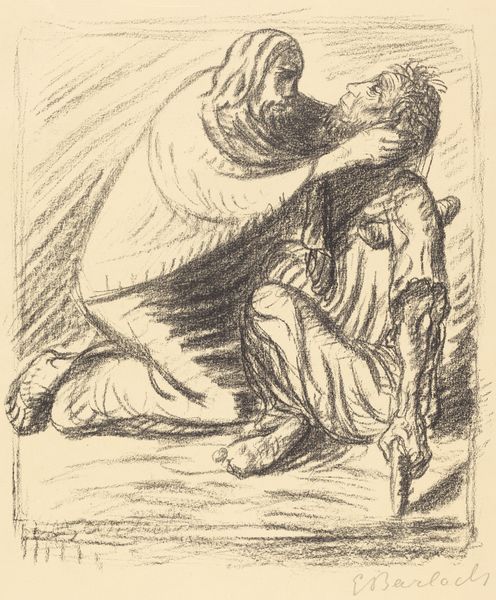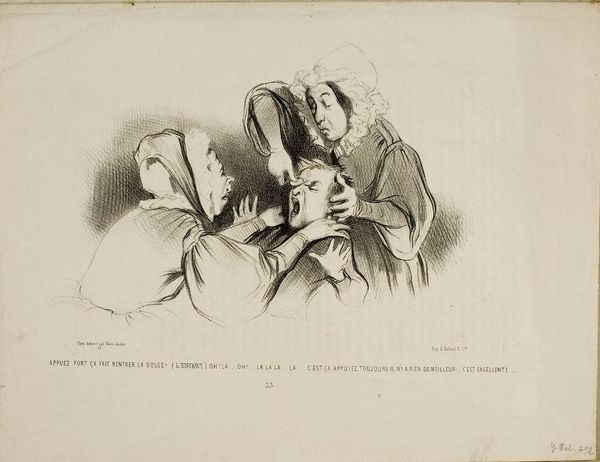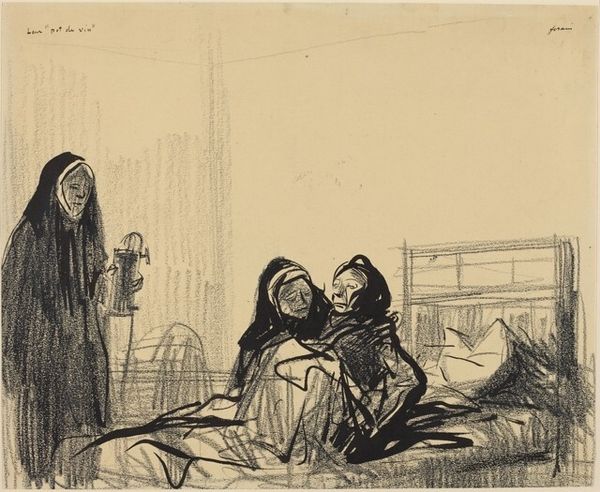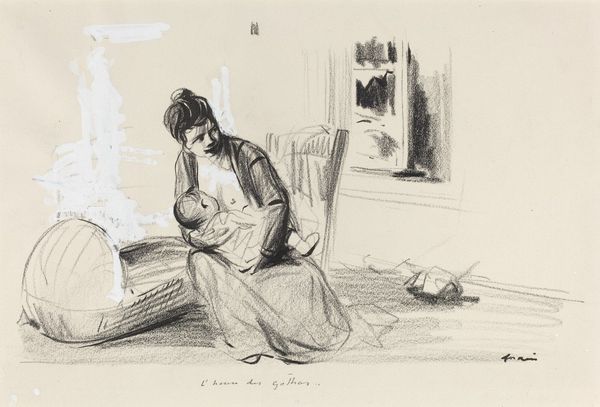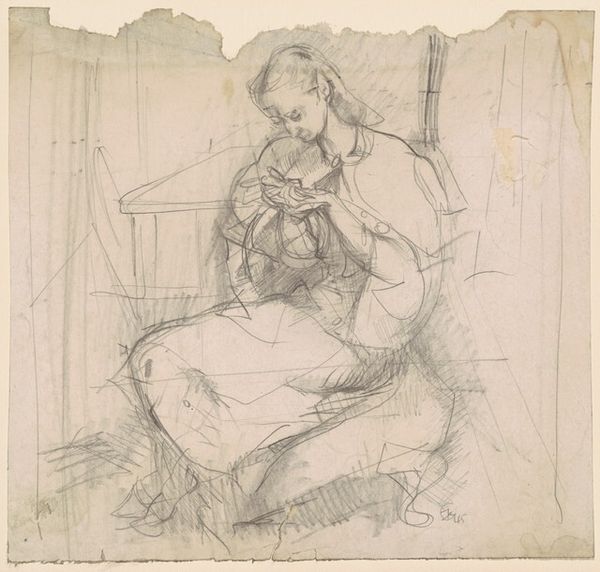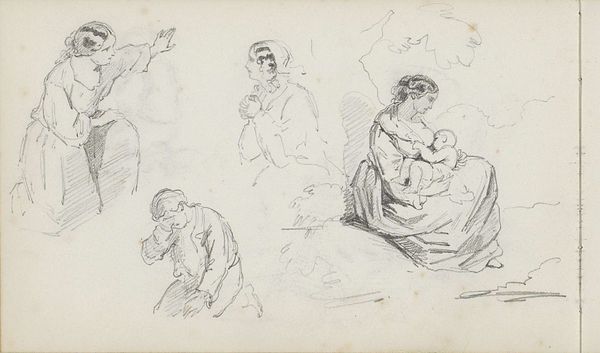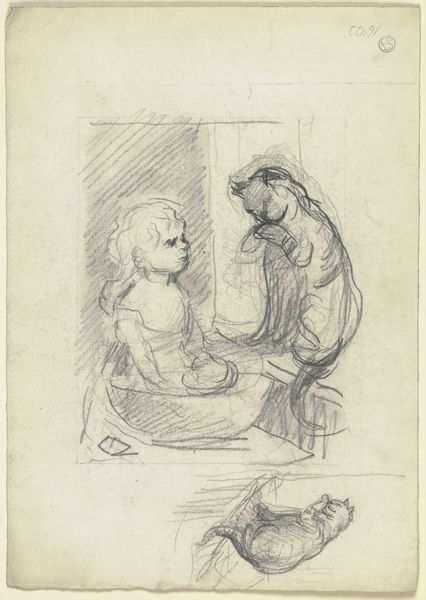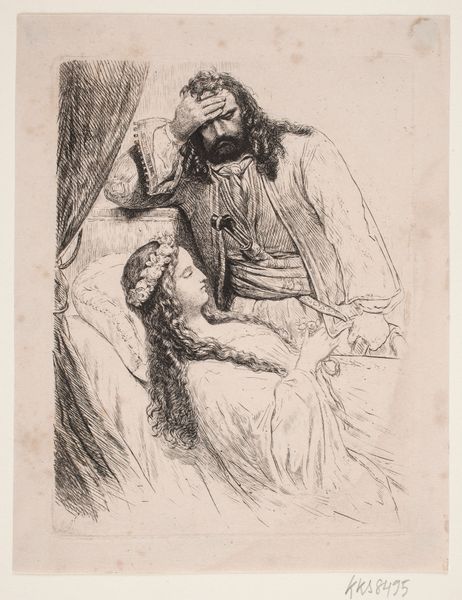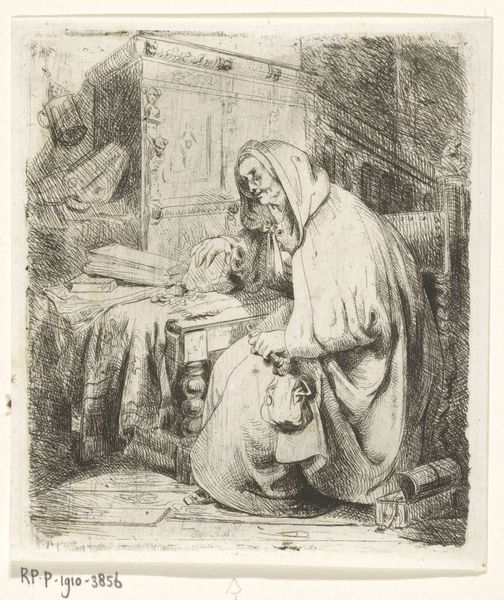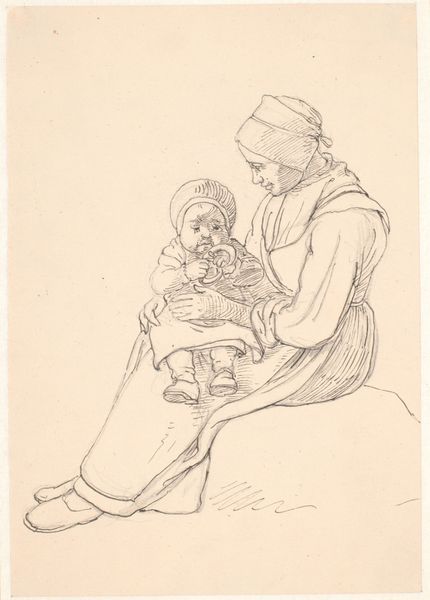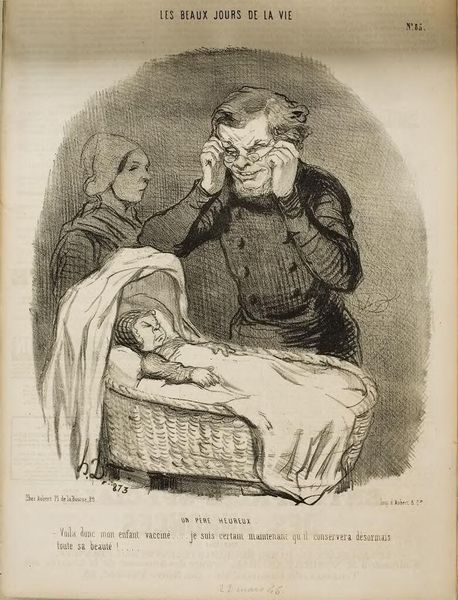
Copyright: Public Domain: Artvee
Editor: Here we have Jean-Louis Forain's "Les Nuits de Paris," created between 1914 and 1919 using charcoal. It has this striking, almost bleak feeling to it. The rough lines and the everyday scene really grab your attention. What do you see in this piece? Curator: Well, focusing on the material conditions, notice how Forain's choice of charcoal, a relatively inexpensive and accessible medium, speaks to the social reality he’s depicting. The rapid strokes suggest a certain urgency, reflecting the hurried lives of working-class Parisians. Editor: So the material itself is a reflection of the subject? Curator: Exactly. And consider the ‘nights’ of Paris he represents. This isn’t the glamorous city of lights, but a scene of domestic labor. The woman caring for the child, the other perhaps working. Where do they source water? How are they disposing of their waste? Think about what that room might be like… the smells, the sounds, the feel of those bed linens. What labor went into even producing that charcoal he used? Editor: It's a really interesting point. I hadn’t considered the implications of Forain using accessible material. It's so much more than just the image, it’s about the entire process. Curator: It challenges our romantic notions of art and Parisian life, bringing attention to the lived experiences of those often ignored. The material reality grounds the work in its time, forcing us to consider the social structures that shaped their existence. Editor: I'm starting to understand how deeply intertwined the materials, the process, and the subject matter really are. It's changed how I look at the drawing completely.
Comments
No comments
Be the first to comment and join the conversation on the ultimate creative platform.
